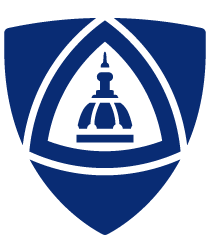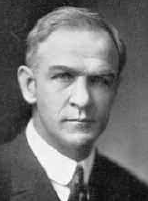Related Research Articles

The Johns Hopkins University is a private research university in Baltimore, Maryland. Founded in 1876, the university was named for its first benefactor, the American entrepreneur, abolitionist, and philanthropist Johns Hopkins. His $7 million bequest —of which half financed the establishment of Johns Hopkins Hospital—was the largest philanthropic gift in the history of the United States up to that time. Daniel Coit Gilman, who was inaugurated as the institution's first president on February 22, 1876, led the university to revolutionize higher education in the U.S. by integrating teaching and research. Adopting the concept of a graduate school from Germany's historic Heidelberg University, Johns Hopkins University is considered the first research university in the United States. Over the course of several decades, the university has led all U.S. universities in annual research and development expenditures. In fiscal year 2016, Johns Hopkins spent nearly $2.5 billion on research. The university has additional graduate campuses in Italy, China, and Washington, D.C., in addition to its main campus in Baltimore, Maryland.

The Big Ten Conference is the oldest Division I collegiate athletic conference in the United States. It is based in Rosemont, Illinois. For decades the conference consisted of 10 universities, while the present conference has 14 member institutions. They compete in the NCAA Division I; its football teams compete in the Football Bowl Subdivision (FBS), formerly known as Division I-A, the highest level of NCAA competition in that sport. The conference includes the flagship public university in each of 11 states stretching from New Jersey to Nebraska, as well as two additional public land-grant schools and a private university.

The University Athletic Association (UAA) is an American athletic conference that competes in the National Collegiate Athletic Association's (NCAA) Division III. Member schools are highly selective universities located in Georgia, Illinois, Missouri, Pennsylvania, Massachusetts, Ohio, and New York. The eight members are Brandeis University, Carnegie Mellon University, Case Western Reserve University, Emory University, New York University, The University of Chicago, University of Rochester, and Washington University in St. Louis.

Daniel Coit Gilman was an American educator and academic. Gilman was instrumental in founding the Sheffield Scientific School at Yale College, and subsequently served as the second president of the University of California, Berkeley, as the first president of Johns Hopkins University, and as founding president of the Carnegie Institution. He was also co-founder of the Russell Trust Association, which administers the business affairs of Yale's Skull and Bones society. Gilman served for twenty five years as president of Johns Hopkins; his inauguration in 1876 has been said to mark "the starting point of postgraduate education in the U.S."

The Johns Hopkins University School of Medicine (JHUSOM), located in Baltimore, Maryland, is the research-intensive medical school of Johns Hopkins University. Founded in 1893, the School of Medicine shares a campus with the Johns Hopkins Hospital, established in 1889. Johns Hopkins has consistently ranked among the top medical schools in the United States, in terms of the number of competitive research grants awarded by the National Institutes of Health, among other measures.

The Johns Hopkins Blue Jays are the intercollegiate athletic teams that represent Johns Hopkins University, located in Baltimore, Maryland. They compete in the NCAA Division III, except for their lacrosse teams, which compete in Division I. They are primarily members of the Centennial Conference. The team colors are Hopkins blue and black, and the blue jay is their mascot. Homewood Field is the home stadium.

Fred Gorham Folsom was an American football player, coach of football and baseball, lawyer, and law professor. He served as the head football coach at the University of Colorado Boulder and at Dartmouth College from (1903–1906), compiling a career college football record of 106–28–6. Folsom played football at Dartmouth from 1892 to 1894. He was also the head baseball coach at Colorado in 1898 and 1899, tallying a mark of 6–6. Folsom practiced law in Denver and Boulder and taught at the University of Colorado Law School from 1905 to 1943. The football stadium at the University of Colorado, originally named Colorado Stadium, was renamed as Folsom Field in his honor in 1944.

The modern Maryland Terrapins football program representing the University of Maryland traces its lineage to the team first formed at what was then the Maryland Agricultural College (MAC) in 1892. In the initial years, due to the rudimentary state of intercollegiate athletics and interstate travel, all games were played against local colleges, high schools, and athletic clubs.

The Johns Hopkins Blue Jays football team represents Johns Hopkins University in the sport of American football. The Blue Jays compete in Division III of the National Collegiate Athletic Association (NCAA) as members of the Centennial Conference. Johns Hopkins has fielded a team since 1882. Johns Hopkins has won or shared 13 Centennial Conference titles since the 2002 season, including 10 straight titles through the 2018 season.

Charles Leverich Eshleman was an American physician and college football coach. He served as the Tulane University football coach for one season, and amassed a 2–2–1 record in 1903.
Papyrus Oxyrhynchus 267 is a fragment of an Agreement of Marriage in Greek. It was discovered in Oxyrhynchus. The manuscript was written on papyrus in the form of a sheet. It is dated to 22 May 37. Currently it is housed in the Milton S. Eisenhower Library of the Johns Hopkins University in Baltimore.
The 1883 Navy Midshipmen football team represented the United States Naval Academy in the 1883 college football season. The team was the third intercollegiate football squad to represent the United States Naval Academy, and the first time the school participated in consecutive seasons. The squad was captained by member Frank Hill. The team played just a single game, a 2 to 0 (2–0) shutout loss to Johns Hopkins, which was the school's first ever loss. The squad was the first to have the approval of the academy's staff, and is regarded as the first official game played by the Midshipmen. The season continued a seven-season, eight game rivalry between the Naval Academy and Johns Hopkins.

The Johns Hopkins–Navy football rivalry was an American intercollegiate football rivalry between the Johns Hopkins Blue Jays football team of Johns Hopkins University and the Navy Midshipmen football team of the United States Naval Academy. The two institutions, located within the span of a few miles in the state of Maryland, first met for a football game in 1882. Following the initial contest, both teams played each other annually for eight years, before it was called off for unknown reasons. The teams competed again in 1911 and 1912, again disbanding the contest until a final match took place in 1919.
The 1884 Navy Midshipmen football team represented the United States Naval Academy in the 1884 college football season. The team was the fourth intercollegiate football squad to represent the United States Naval Academy, and was the final time the school played a single-game season. The squad was captained by rusher Jim Kittrell. The team's single game was a 9 to 6 (9–6) defeat of rival-school Johns Hopkins. The season continued a seven-season, eight game rivalry between the Naval Academy and Johns Hopkins. It was the final season that a Naval Academy team would go unbeaten and untied.
The 1885 Navy Midshipmen football team represented the United States Naval Academy in the 1885 college football season. The team was the fourth intercollegiate football squad to represent the United States Naval Academy, and marked the first time that the school played a multiple-game season. The squad was captained by halfback Cornelius Billings. The year began with a blowout victory over St. John's College, but was followed by close losses to Johns Hopkins University and the Princeton Tigers reserves squad. The season continued a seven-season, eight game rivalry between the Naval Academy and Johns Hopkins, and began a ten-game, seven-year rivalry with St. John's.
John Arthur Hall was an American football player and coach. He played college football for the Yale Bulldogs football team and was selected as a consensus honoree on the 1897 College Football All-America Team. He also served as the head coach of the Carlisle Indians football team in 1898. Hall also played ice hockey on intercollegiate and amateur levels for Yale University and teams in New York City and Pittsburgh.
The 1886 Navy Midshipmen football team represented the United States Naval Academy in the 1886 college football season. The team marked the second time that the school played a multiple-game season. The squad was captained by halfback Clarence Stone. The year began with consecutive wins over rivals St. John's College and Johns Hopkins, but then regressed with a loss to the former and a close victory over the latter. The year concluded with shutout losses to the Princeton reserve squad and Gallaudet. The season was the program's longest until 1890, when that year's team played seven games.
The 1887 Navy Midshipmen football team represented the United States Naval Academy during the 1887 college football season. The team compiled a 3–1 record and outscored its opponents 41 to 22. The Midshipmen shut out their first three opponents, including an 8–0 victory in the seventh installment of the Johns Hopkins–Navy football rivalry. The Johns Hopkins game was played at the Academy grounds in Annapolis, Maryland, and was described by The Sun as "a veritable slugging match" and "one of the roughest games of football" ever seen there. In the final game of the 1887 season, the Midshipmen lost to the Princeton Tigers "B" team in the final game of the season. The team captain was George Hayward.
The 1917 Maryland State Aggies football team represented Maryland State College in the 1917 college football season. In their seventh season under head coach Curley Byrd, the Aggies compiled a 4–3–1 record, and were outscored by all opponents, 159 to 89. The team won games against Delaware (20–0), Wake Forest (29–13), St. John's College (13–3), and Johns Hopkins (7–0), lost to Navy (0–62), North Carolina A&M (6–10), and Penn State (0–57), and played VMI to a tie (14–14).
The Maine Black Bears football program from 1892 to 1899 represented the University of Maine in its first decade of intercollegiate football.